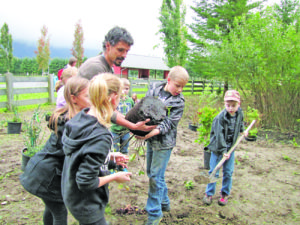TREE PLANTING PROJECTS KICK OFF AROUND PUGET SOUND

By Hannah Kett
As fall gets under way in Washington state, there is one type of nature that is top of mind for many people: trees.
With leaves changing colors to create a beautiful backdrop, it is the time of year when we plant trees in the Northwest. From our mountains and forests to our cities and towns, healthy trees are important for thriving and resilient communities.
Fall also brings the rainiest months of the year. As this rain falls on our hard urban surfaces, it picks up pollutants that have been building up throughout our summer, washing this toxic mixture into our waterways and into Puget Sound. Stormwater is the No. 1 polluter of Puget Sound, harming the health of our ecosystems and our iconic salmon species.
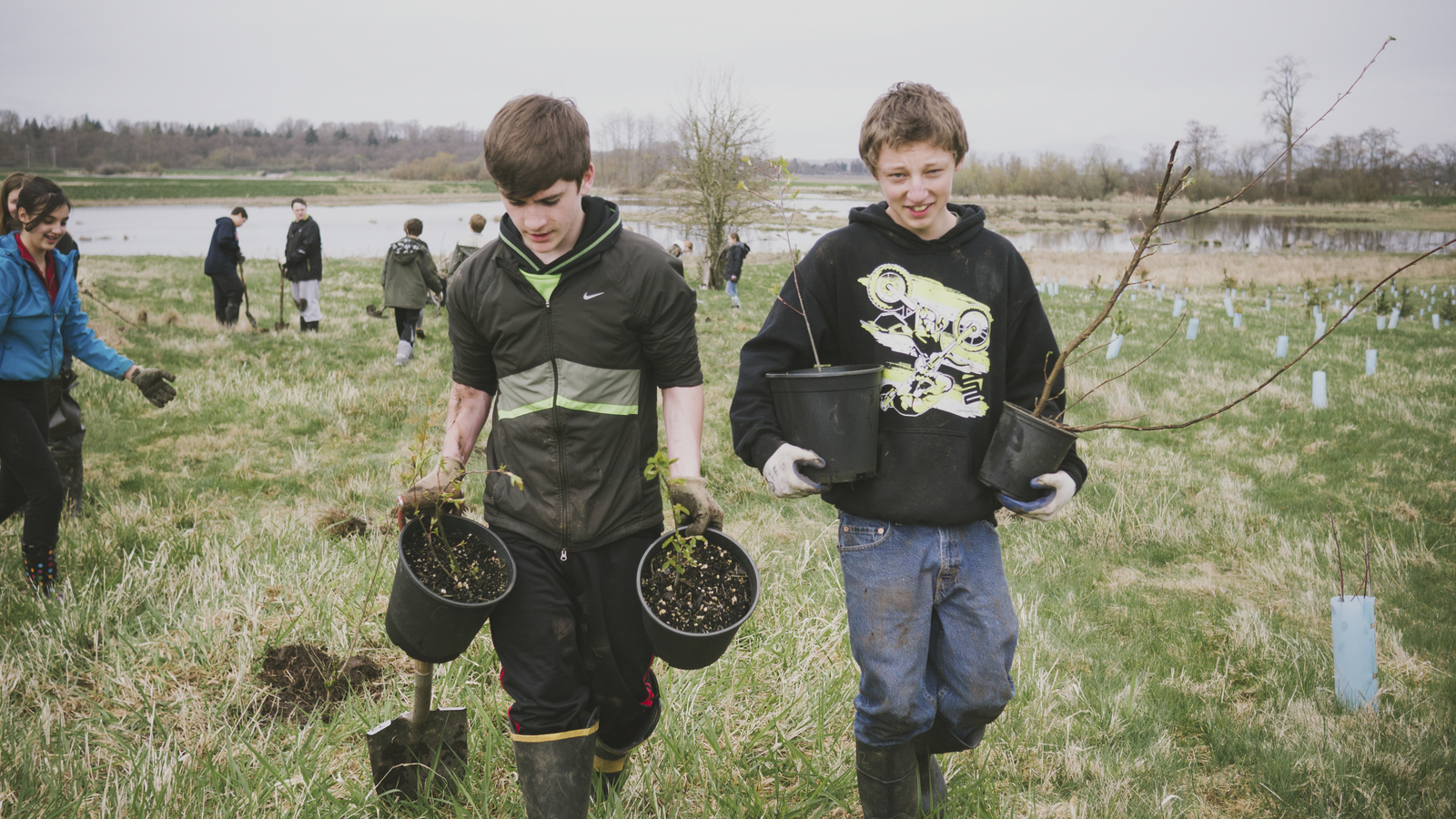
Photo by Don Macanlalay / The Nature Conservancy
But there’s a solution to this and many of the other challenges cities face: trees! In our cities and towns, trees reduce stormwater pollution while filtering air pollution and cooling urban heat islands. They also support mental health, reduce stress and more. Through Planting Trees for Thriving Communities, The Nature Conservancy in Washington is driving forward tree-canopy enhancement across our region — from collaborating across sectors, investing in on-the-ground projects and building science data on how trees impact our wellbeing. These projects are a key part of our work to drive forward nature-based solutions for the health of people and nature.
We are excited to announce the first six on-the-ground projects selected to receive funding through a competitive Puget Sound-wide request for proposals process by an advising committee made up of partners from around the region. The projects are focused around engaging communities in enhancing tree canopy in our cities and towns for the benefit of stormwater and human health.
“Through this effort, we are catalyzing on-the-ground tree-planting projects around Puget Sound that are planting trees for the health of their communities and for the water flowing into Puget Sound,” says Chris Hilton, Puget Sound urban partnership director for The Nature Conservancy in Washington. “By investing in diverse projects and bringing together partners from across the region, we can take an important step for restoring the health of Puget Sound.”
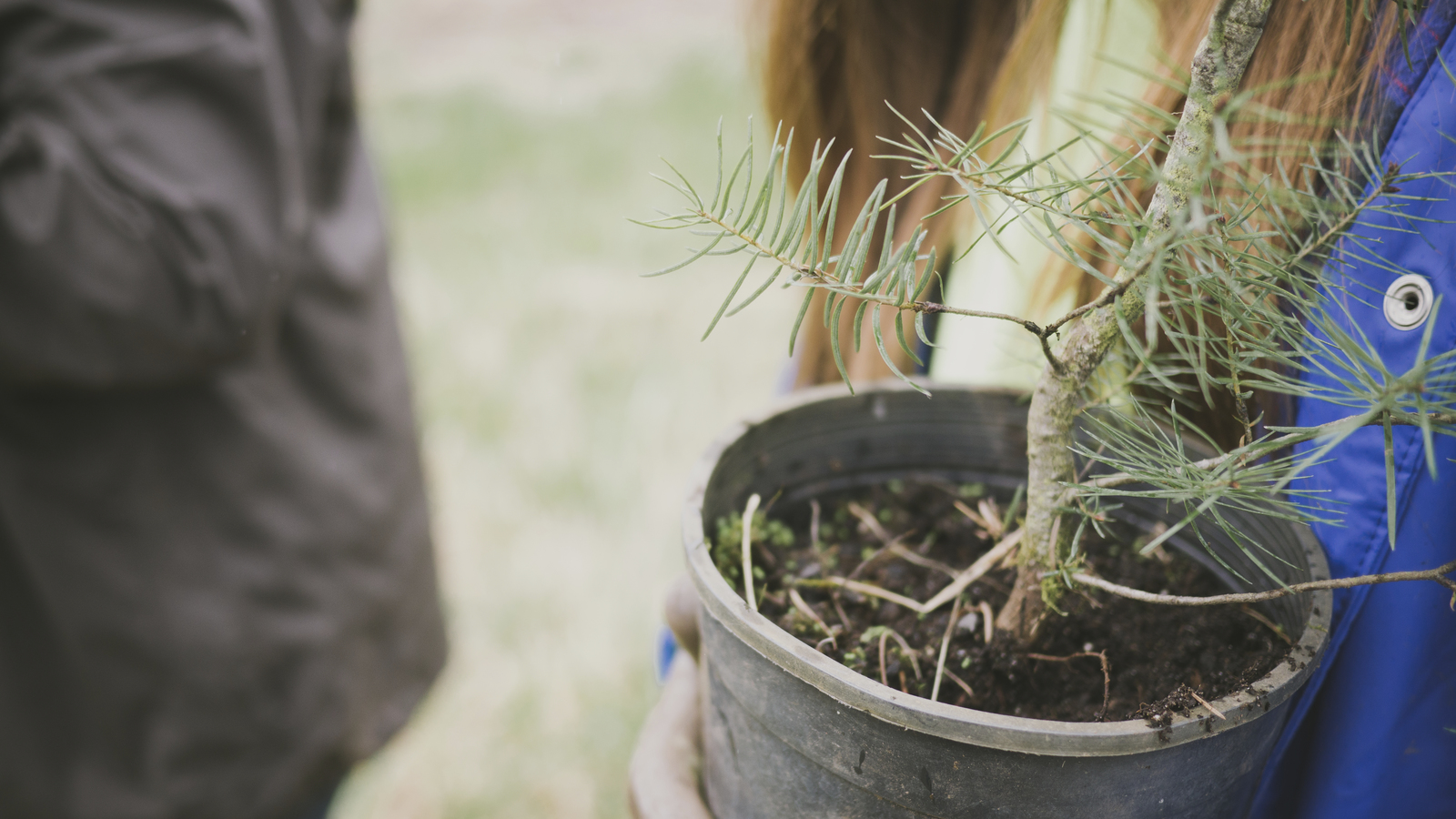
Photo by Don Macanlalay / The Nature Conservancy
Youth Branching out for Tree Canopy, Duwamish Infrastructure Restoration Training Corps (DIRT Corps): Building on the Duwamish Tree Canopy Enhancement Program, DIRT Corps will work with youth-serving organizations throughout Seattle to deliver an equity-focused tree outreach and planning program. These efforts will be focused in the areas of the city with the lowest tree canopy cover and worst air and surface water quality. Together, DIRT Corps and the youth-serving groups will host multilingual outreach events, tree giveaways and planting support. In all, the project will plant 1,000 trees in the Seattle area.
West Bay Woods Restoration, Olympia Coalition for Ecosystems Preservation(OlyEcosystems): OlyEcosystems is working with communities to bring the health of West Bay Woods in Olympia, a site cleared of most of its trees back in 2009 to ready it for townhouse development that did not move forward. Restoration of this space will provide an accessible green space for the low-income Northwest Neighborhood of Olympia — as well as reduce stormwater pollution and provide habitat for wildlife.
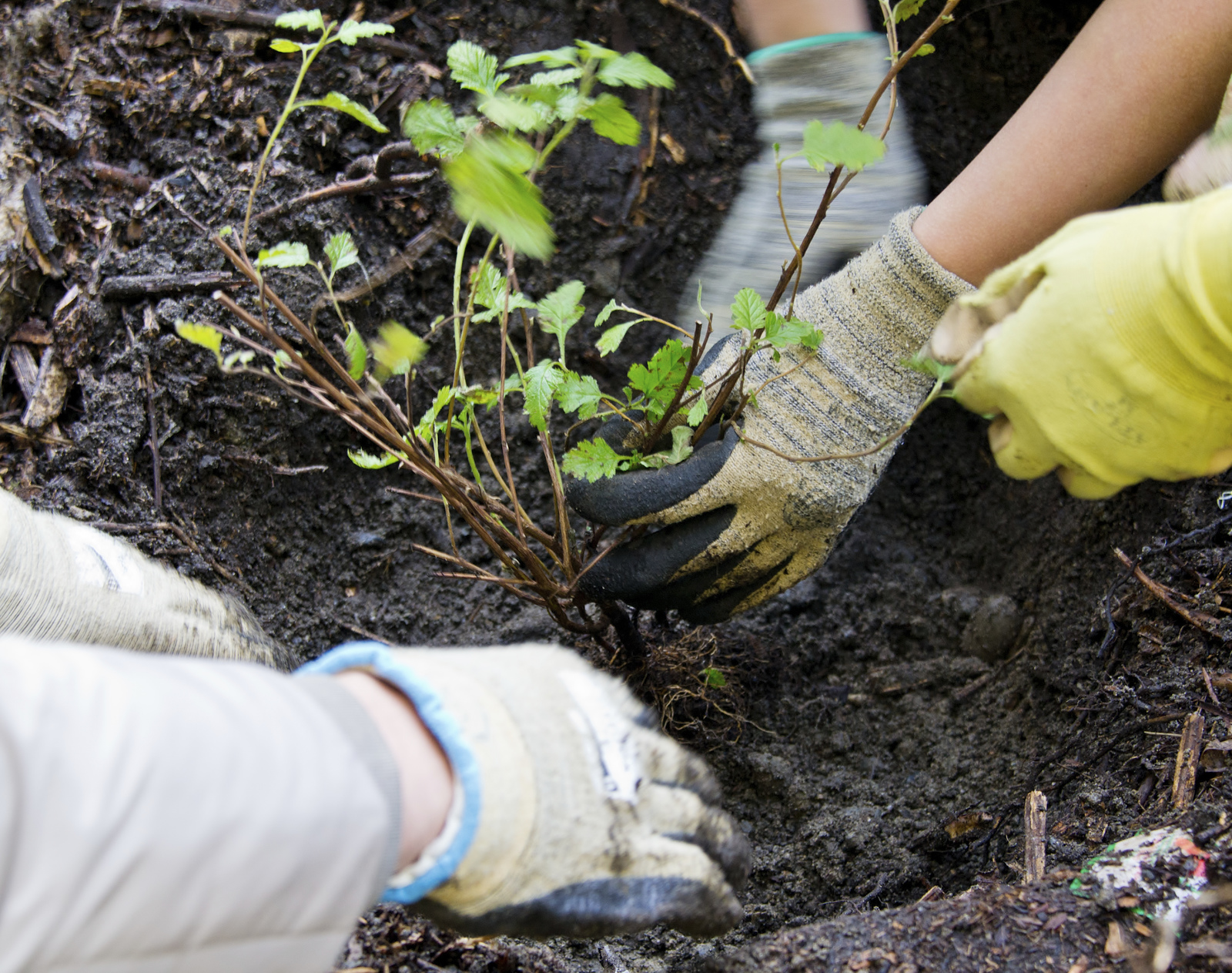
Photo by Milo Zorzino
Trees for Salmon and Whales, Whale Scout: An organization focused on supporting the health of salmon and orcas, Whale Scout engages volunteers throughout Puget Sound to support restoration work that reduces stormwater runoff, shades salmon habitat and provides on-shore whale watchers opportunities to take action to improve conditions for killer whales. Along with volunteer events, the project includes a seedling giveaway to bring stewardship to our backyards and improve residential stormwater.
Green Shoreline Partnership launch, Forterra: In collaboration with the City of Shoreline, Forterra is bringing its Green Cities model to Shoreline to begin formalizing a citywide tree-stewardship program. During the launch, the program will engage community volunteers in planting trees within the Thornton Creek basin. This effort will set the foundation for a 20-year stewardship plan for Shoreline and its parks.
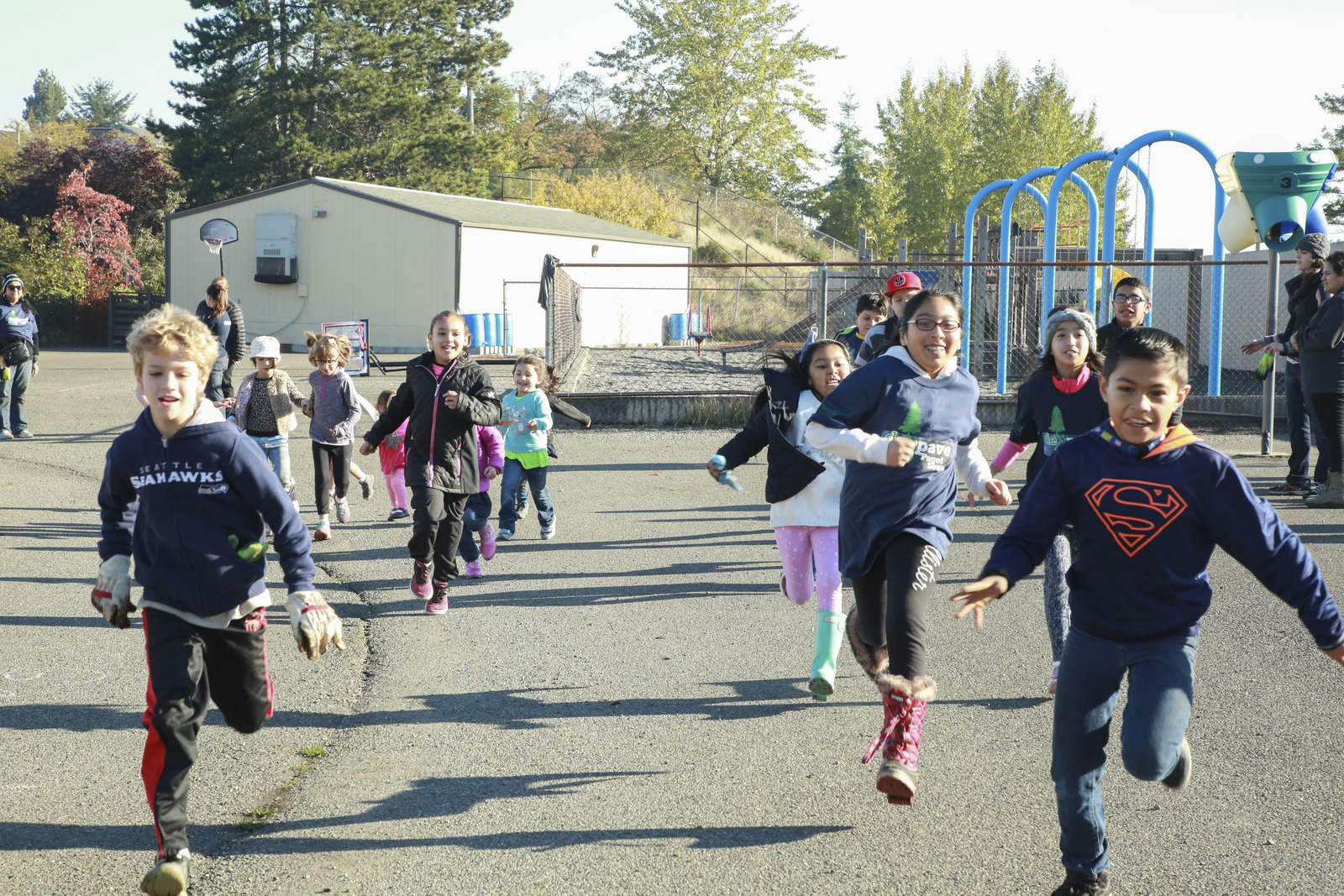
Photo by Marissa Singleton
Hawthorne Elementary Depave and Tree Planting, Friends of Hawthorne PTA: Friends of Hawthorne PTA has come together with the Pomegranate Center to reimagine the Hawthorne Elementary school yard in Seattle, replacing the hard asphalt with trees and spaces to create a connection with nature for students. This transformation will support learning, improve air quality and reduce stormwater pollution. For the diverse group of neighbors, the project is a proud example of what they can achieve when they join together.
Strawberry Fields, Adopt-a-Stream: In Marysville, Adopt-a-Stream is working with community to bring back healthy plantings at Strawberry Fields, a park and athletic field. The trees planted will support water quality in the Middle Fork of Quilceda Creek, a tributary to the Snohomish River – as well as reduce the flooding that neighbors downstream experience. While engaged in planting, volunteers will be able to learn about how to plant trees, the importance of planting trees and more.
Working Across the West Coast
This project in Puget Sound is one of three efforts The Boeing Company is investing in across the Western United States. The Nature Conservancy in Washington is working concurrently with projects in Oregon led by The Nature Conservancy in Oregon and Friends of Trees, and in California led by Tree People. Together, these projects are engaging communities in tree planting to support air quality, water quality and fire recovery.
Subscribe to our e-mail list.
Stay up-to-date on how we are building a movement around nature in cities - including the latest stories from the blog and upcoming events.
© Kevin Arnold

